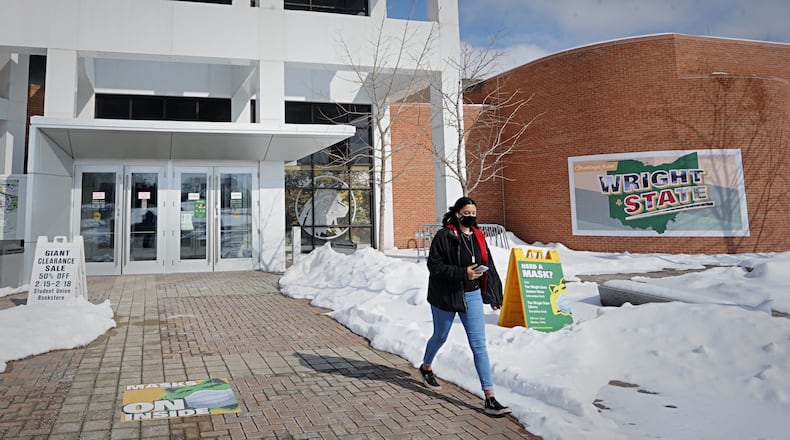“Certainly, this is a difficult decision for the university, and I assure everyone it is a decision we have not made lightly,” Edwards said. “We have for quite some time focused on alternatives to these changes, including two separate rounds of retirement incentives, a reduced reliance on adjunct faculty and an effort to reduce by attrition. Unfortunately, those efforts have not sufficiently reduced the size of our excess faculty workforce. The continuing enrollment declines require us to act further.”
The university currently has a projected $7 million budget surplus in fiscal year 2021, but trustees said that budget surplus had nothing to do with the board’s decision to cut faculty positions. Wright State has said it’s cutting faculty to align with projected student enrollment declines following several years of decreases.
First-year undergraduate student enrollment has declined by 53% since 2015, according to the university. Reduced enrollment continued this spring, the university says.
In November, university administration triggered articles in the existing Collective Bargaining Agreement between the union that represents Wright State faculty, the AAUP-WSU, and Wright State University, to begin the process of retrenchment.
According to a press release from Wright State, Articles T17 and N17 of the CBA between the AAUP-WSU and Wright State University acknowledge that faculty workforce reductions, called “retrenchment,” may become necessary as a result of, among other circumstances, a “significant reduction in enrollment” that continues over at least four semesters (not counting summers) and is expected to persist.
Faculty Senate President Laura M. Luehrmann, a political science professor, said faculty are concerned, insecure and even angry about these recommendations.
She also highlighted the recommendations from the Joint Admin-Union Committee on retrenchment, from Edwards and from current Wright State interim Provost Douglas W. Leaman that discuss the need to mitigate the need to cut positions.
“I hope we can trust that those decisions will continue to be made with empathy and foresight. Just as we pride ourselves in saying ‘no Wright State student is a number,’ let us also remember that for our faculty,” she said.
Edwards said the university may not need to cut 113 faculty positions.
“I am recommending an ‘up to’ retrenchment number because there are multiple alternatives available that can achieve the elimination of some of the excess positions and thus decrease the final number of positions actually needing to be formally retrenched,” Edwards said.
She said if enrollment improves significantly, the faculty union contract provides a mechanism for Wright State to reduce the number on the retrenchment list and potentially even call back retrenched faculty.
“That affords the opportunity to decrease the number of positions appropriately as we gain additional enrollment,” she said.
In a letter from Leaman to Edwards, Leaman recommended specific faculty cuts from colleges. The most recommended cuts were placed on the College of Liberal Arts, where 49 faculty members were recommended to be cut.
Leaman said in his letter that while overall student enrollment has declined, the university expects more growth in the College of Nursing and Health and the College of Engineering and Computer Sciences, he said.
Leaman stressed the importance of boosting recruitment and retention efforts in his report.
“Failing to do so might require additional faculty retrenchment,” Leaman said.
Wright State faculty who are given notice they are part of the retrenchment unit could still be teaching for up to the next 18 months under the terms of their bargaining agreement. The length of time they could still be teaching depends on the amount of time they spent at Wright State. The university said it intends to offer a significant workforce displacement support package.
Edwards requested during the session that trustees consider an employee voluntary separation incentive program. The trustees approved that plan.
Wright State also said the reduction in positions will not hinder the ability of current students to complete their degree programs in a timely manner.
Trustees also approved an additional investment of $1 million for enrollment and retention at Friday’s meeting.
“The Board of Trustees has previously supported our efforts to stabilize and bolster enrollment and retention,” Edwards said. “Building upon that support, I requested additional investment be made in key areas that could potentially offset the number of faculty positions impacted by retrenchment. I will consult with Faculty Senate on ways faculty can engage to the greatest effect.”
About the Author

